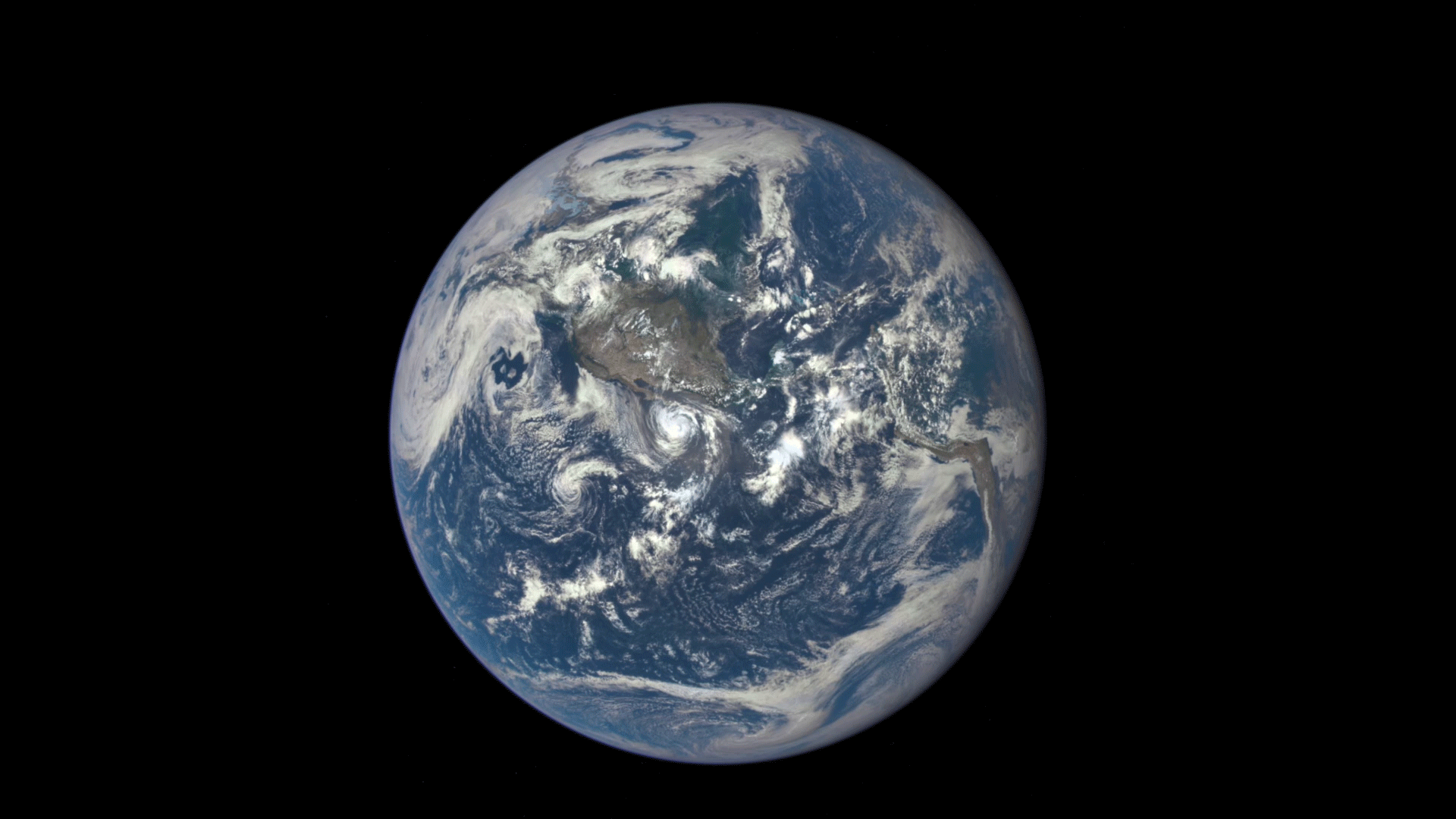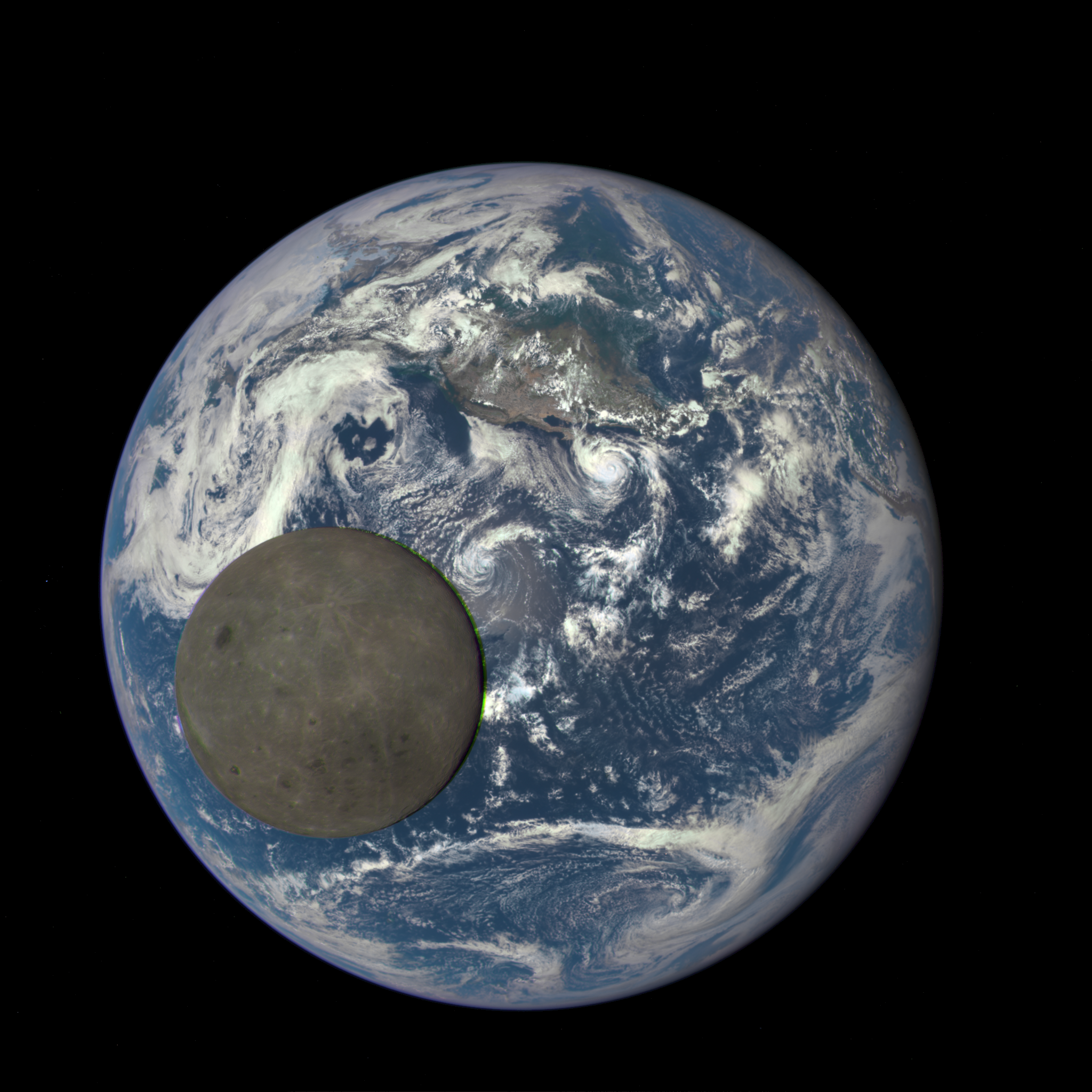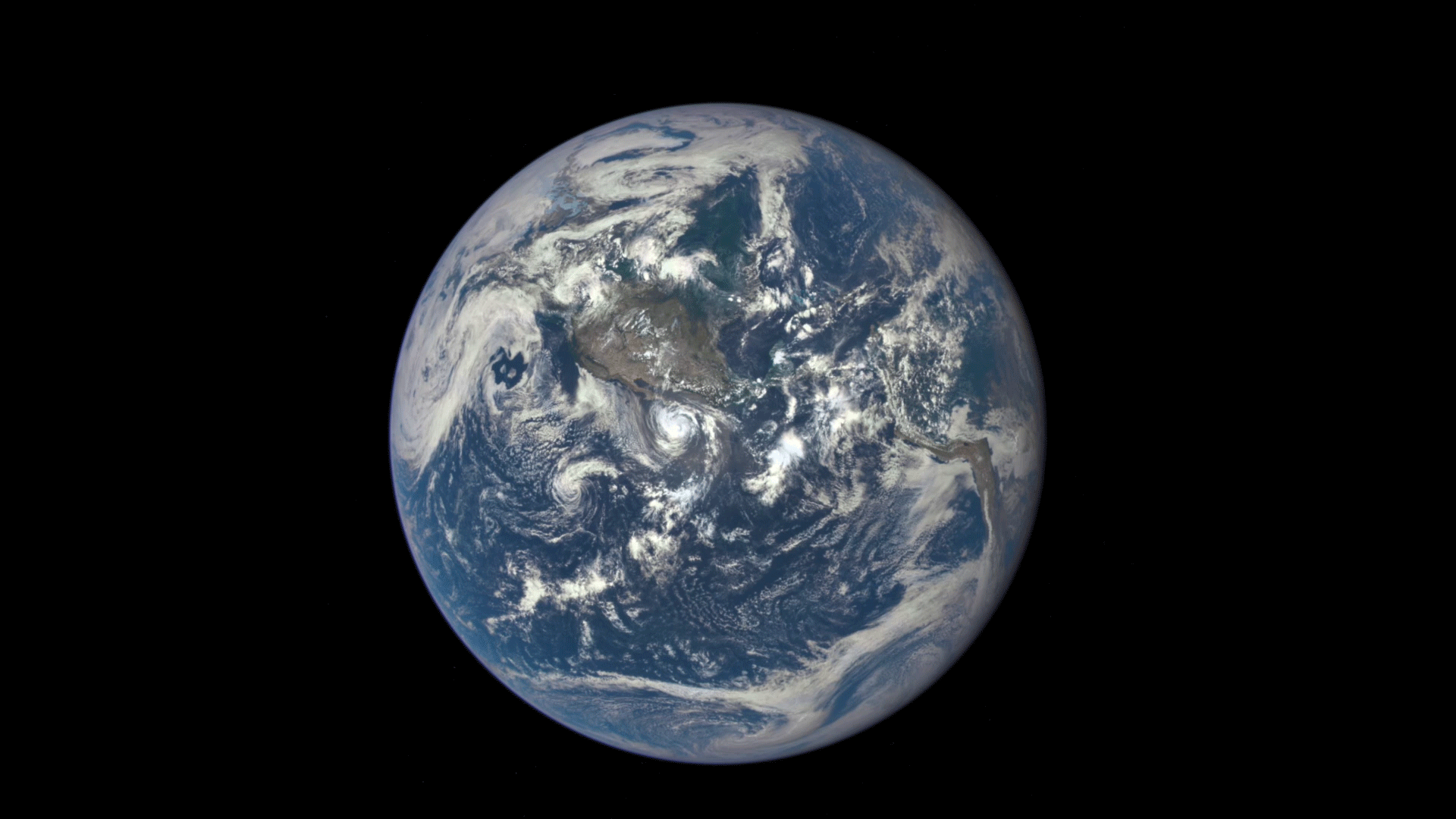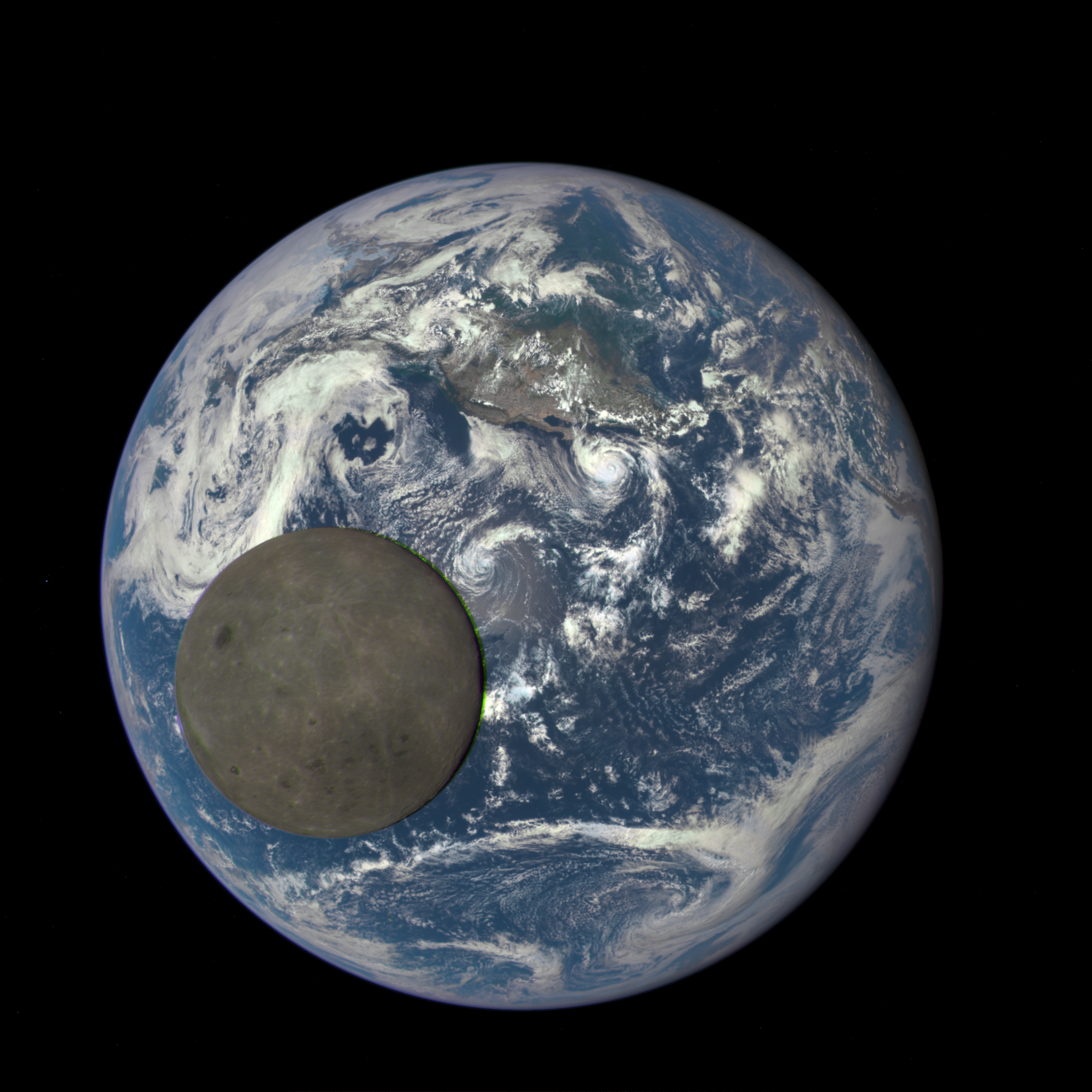From a Million Miles Away, Moon Crossing Face of Earth

| Credit | NASA/NOAA |
|---|---|
| Language |
|
Deep Space Climate Observatory (DSCOVR) satellite's EPIC maintains a constant view of the fully illuminated Earth as it rotates, providing scientific observations of ozone, vegetation, cloud height and aerosols in the atmosphere.
About twice a year the camera captures the Moon and Earth together as the orbit of DSCOVR crosses the orbital plane of the Moon.
These images were taken between 3:50 p.m. and 8:45 p.m. EDT showing the moon moving over the Pacific Ocean near North America. The North Pole is in the upper left corner of the image. It is in the original orientation as taken by the spacecraft.
This image from the Deep Space Climate Observatory (DSCOVR) satellite captured a unique view of the Moon as it moved in front of the sunlit side of Earth in 2015. It shows a view of the farside of the Moon, which faces the Sun, that is never directly visible to us here on Earth. I found this perspective profoundly moving and only through our satellite views could this have been shared. - Michael Freilich, Director NASA Earth Science Division
The far side of the Moon was not seen until 1959 when the Soviet Luna 3 spacecraft returned the first images. Since then, several NASA missions have imaged the lunar far side in great detail. The same side of the Moon always faces an earthbound observer because the Moon is tidally locked to Earth. That means its orbital period is the same as its rotation around its axis.
In May 2008 NASA’s Deep Impact spacecraft captured a similar view of Earth and the Moon from a distance of 31 million miles away. The series of images showed the Moon passing in front of our home planet when it was only partially illuminated by the Sun.
EPIC’s “natural color” images of Earth are generated by combining three separate monochrome exposures taken by the camera in quick succession. EPIC takes a series of 10 images using different narrowband spectral filters -- from ultraviolet to near infrared -- to produce a variety of science products. The red, green and blue channel images are used in these color images.

Combining three images taken about 30 seconds apart as the Moon moves produces a slight but noticeable camera artifact on the right side of the Moon. Because the Moon has moved in relation to the Earth between the time the first (red) and last (green) exposures were made, a thin green offset appears on the right side of the Moon when the three exposures are combined. This natural lunar movement also produces a slight red and blue offset on the left side of the Moon in these unaltered images.
The lunar far side lacks the large, dark, basaltic plains, or maria, that are so prominent on the Earth-facing side. The largest far side features are Mare Moscoviense in the upper left and Tsiolkovskiy crater in the lower left. A thin sliver of shadowed area of Moon is visible on its right side.
“It is surprising how much brighter Earth is than the Moon," said Adam Szabo, DSCOVR project scientist at NASA’s Goddard Space Flight Center in Greenbelt, Maryland. "Our planet is a truly brilliant object in dark space compared to the lunar surface.”
Once EPIC begins regular observations next month, NASA will post daily color images of Earth to a dedicated public website. These images, showing different views of the planet as it rotates through the day, will be available 12 to 36 hours after they are acquired.
DSCOVR is a partnership between NASA, NOAA and the U.S. Air Force with the primary objective of maintaining the nation’s real-time solar wind monitoring capabilities, which are critical to the accuracy and lead time of space weather alerts and forecasts from NOAA.
For more information about DSCOVR, visit:
Rob Gutro
NASA’s Goddard Space Flight Center, Greenbelt, Md.


